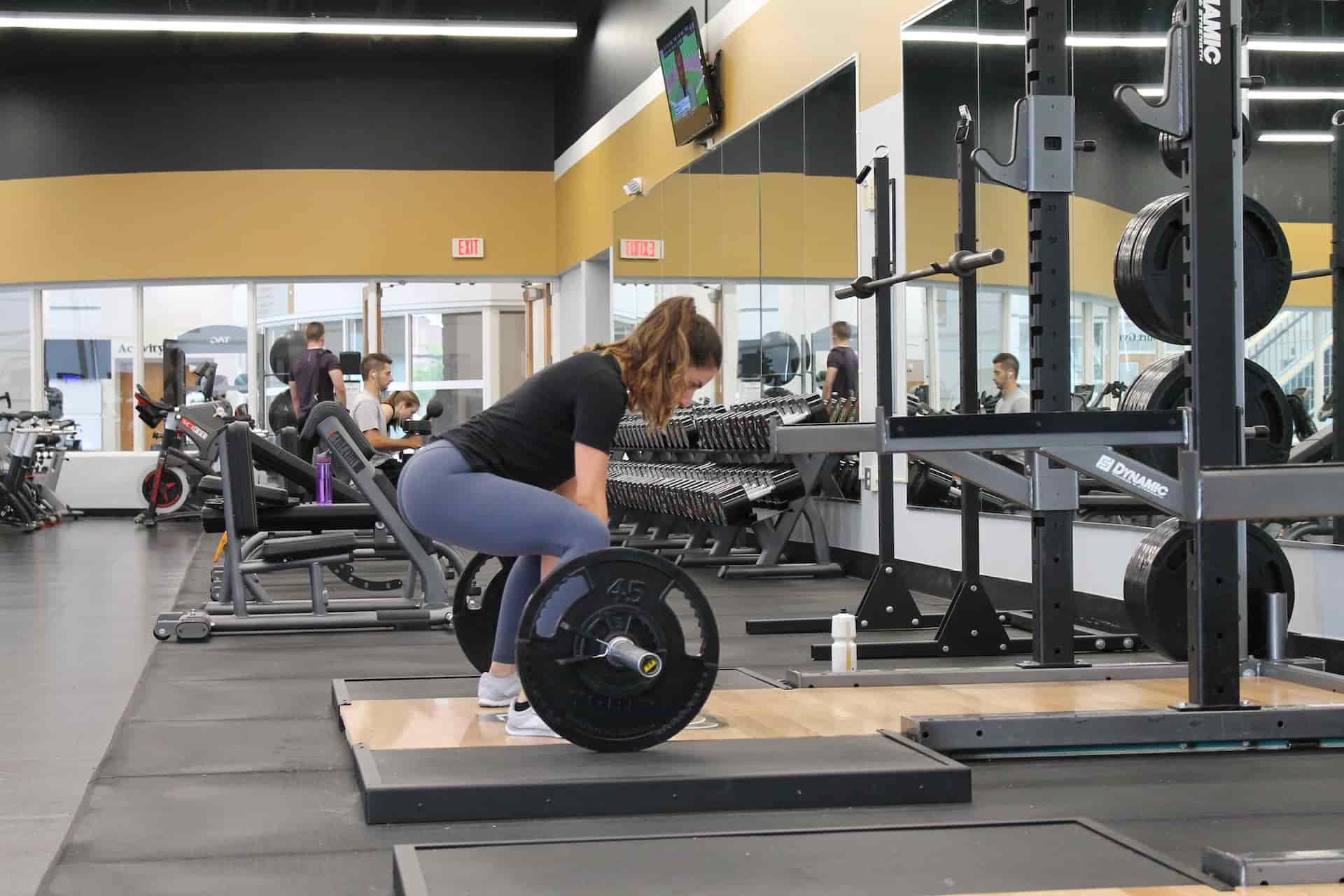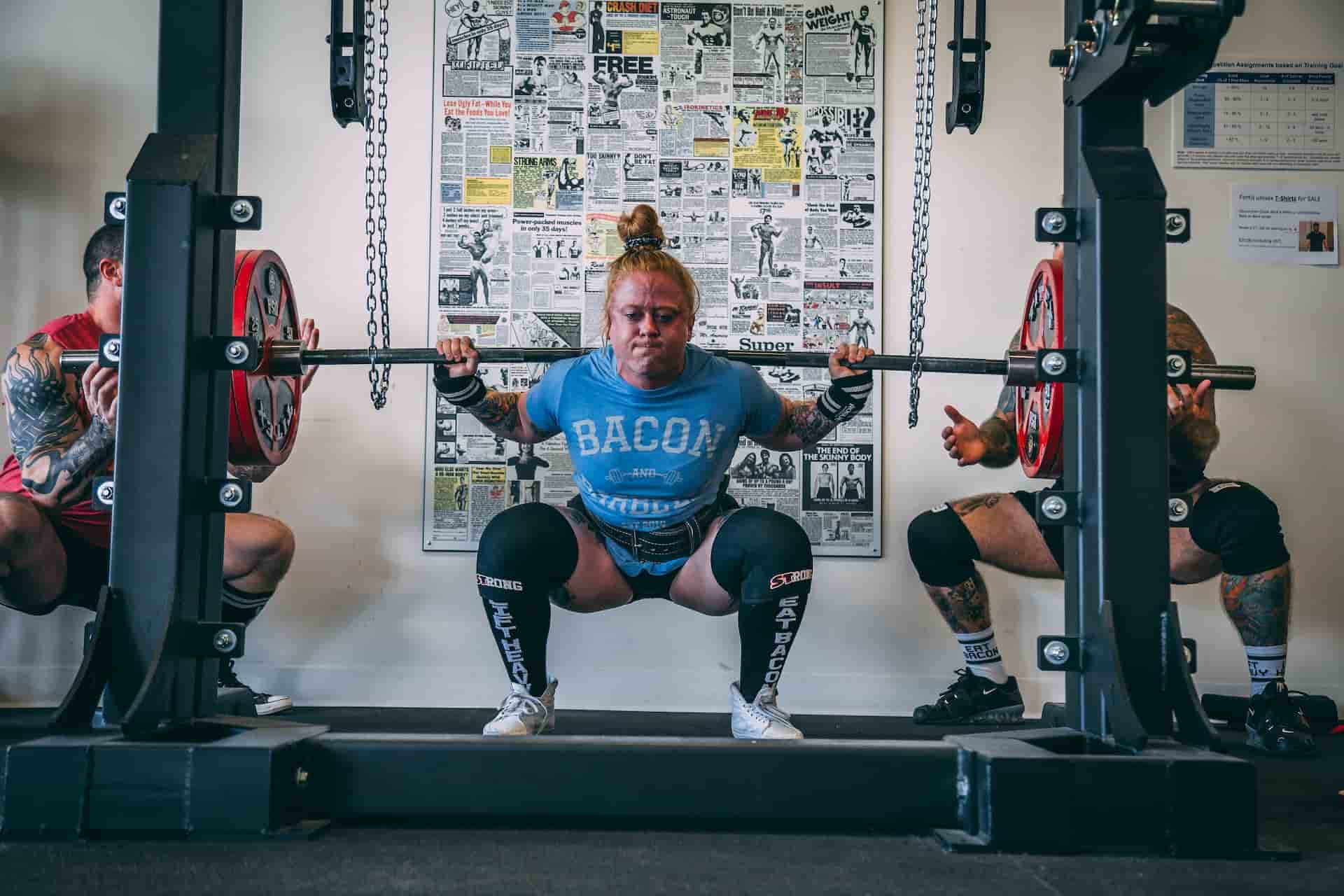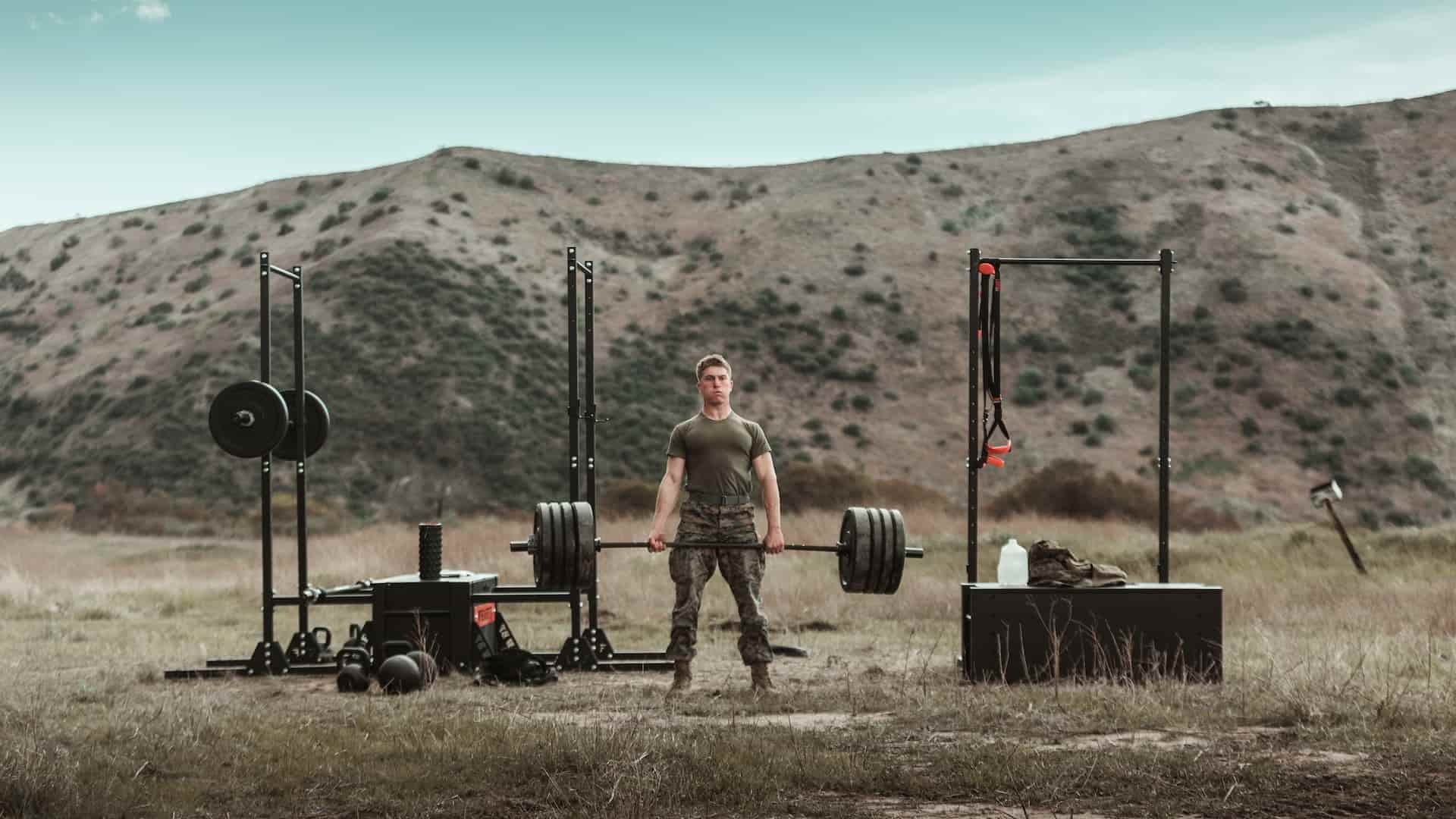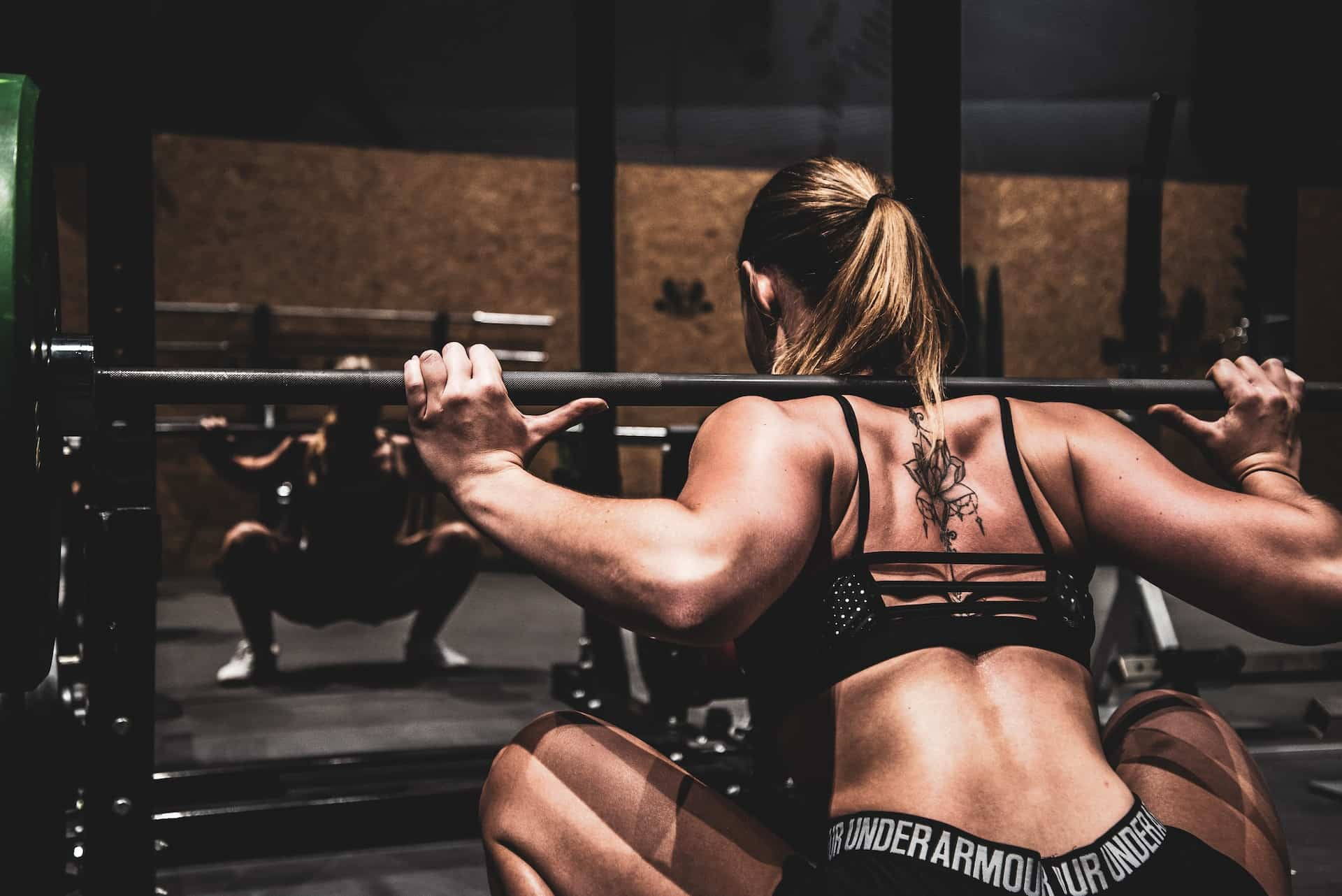24 de October de 2023
Squats vs Deadlift for Gaining Strength and Power
Squats and deadlifts are two of the three exercises used to measure total strength in powerlifting championships, indicating their importance in the world of strength. Just as we often do with the two top athletes in a sport, many coaches compare squat vs. deadlift to choose which one is better for developing strength and power. The quick answer is, why settle for one when we can do both? The long answer to the comparison between squat vs. deadlift can be found in this article.
An important detail to highlight is that we will always be talking about conventional back squat and conventional deadlift, not their various variations. Squats and deadlifts involve several muscles in the lower and upper body and activate both knee extensors and flexors (Camara et al., 2016). It has been shown that squats and deadlifts improve strength and power expressed in sprints and jumps and prevent knee injuries (Hartmann et al., 2013).
Main differences Between Squats & Deadlifts

Both deadlift and squat share several similarities when similar joint angles of the hip and knee are used. Both exercises extensively activate the hip, knee, and ankle extensors, as well as the erector spinae muscles (Hales et al., 2009). However, the squat and the deadlift also exhibit some differences. Let’s explore the main differences below.
Maximum Effort Point
When comparing the squat vs. the deadlift, one of the differences they exhibit is their distinct point of maximum tension, characterized by a reduction in lifting speed. This point of speed loss occurs at different hip, knee, and ankle positions in the squat vs. deadlift (Hales et al., 2009). The reason for this difference depends on the barbell’s position and the type of lift we perform. By having different points within the range of motion where it’s more or less challenging, we can make ourselves stronger at those points. Therefore, the more we can vary them, the stronger and more powerful we will become at all degrees of hip and knee flexion.
Knee Hinge VS Hip Hinge
A full squat brings the knees to 90 degrees, resulting in greater knee flexion than the deadlift. However, the deadlift involves the hips more than the squat, leading to differences in both the sticking point and the stimulated musculature (Hales et al., 2009). If we think of the hips and knees as hinges on a door, the squat will move the knee hinge more, whereas the deadlift will create more movement at the hip hinge.
The lesser knee flexion in the deadlift compared to the full squat is compensated by greater loading on the osteoarticular and ligamentous structures of the trunk (Solomonow et al., 1987). The deadlift exercise can induce higher tension in the lumbar spine compared to the squat. The biomechanics of the deadlift may result in a more pronounced anterior trunk lean than the squat, leading to functional overload of the back extensors (Rippetoe et al., 2011). The key takeaway from this difference is that we should not overload the same structures with the same movement. It’s important to vary volume and intensity throughout the training program to prevent overuse injuries.
Main Muscles Involved
Due to the difference in the greater range of motion at the knee hinge for squats and a greater range at the hip hinge for deadlifts, the muscles that are most activated differ. This doesn’t mean that all lower-body muscles aren’t worked, but rather that they are activated to varying degrees. Squats will stimulate the quadriceps as the primary muscle group, closely followed by the glutes, while the hamstrings are much less activated (Kubo et al., 2019). Deadlifts focus more on the hamstrings, assisted by the glutes, with quadriceps activation being secondary in this exercise.
Therefore, the activation of hamstrings in squats and quadriceps in deadlifts is secondary. Deadlifts also increase activation in the lower back and other muscles like the lats, which act synergistically. These back muscles, along with others that make up the core, as well as the calves and soleus, assist in both lifts.
Differences in Lifted Weight and Fatigue Effects
Athletes competing in weightlifting events typically can lift heavier loads in the deadlift compared to the parallel squat. The deadlift allows for a greater absolute load and stimulates more muscle mass than the squat, making this movement more fatiguing. The extent of this fatigue depends on various factors such as training status, volume, and the intensity of effort reached with each lift.
In the comparison of squat vs. deadlift, some authors have found similar acute reductions in strength development, i.e., post-training, as well as changes in testosterone and cortisol levels after performing both exercises (Barnes et al., 2019). Currently, it cannot be scientifically confirmed or denied that when comparing squat vs. deadlift using the same variables, there are significant differences between them. However, in practice, athletes often experience greater fatigue with the deadlift, leading them to perform fewer repetitions of this exercise compared to the squat.
Effects of Squats vs. Deadlifts on Strength and Power

Both squats and deadlifts have demonstrated positive effects on vital performance parameters, with vertical jump being one of the primary explosive exercises evaluated (Mangine et al., 2008). In July 2020, researchers Federico Nigro and Sandro Bartolomei published the first experimental study comparing the effects of squats vs. deadlifts on lower body strength and maximum power (Nigro & Bartolomei, 2020). Their findings indicated that different strength training programs in which either deadlifts or parallel squats were the sole lower body resistance exercise led to similar increases in lower body power.
In both this research and others, data can be influenced by the explosive intent of the participant, poor technique, or greater strength in one movement over the other (Bartolomei et al., 2018). The strength gained over several weeks of training is similar in squats vs. deadlifts, with some studies showing superior results for squats (Colquhoun et al., 2017) and others for deadlifts (Colquhoun et al., 2018). This indicates that both exercises are valid for progressing in overall lower body absolute strength, regardless of gender and initial strength levels (Latella et al., 2020). This is supported by one of the latest studies conducted over a 15-year period, involving 1896 powerlifting competitors (Latella et al., 2022).
Squat VS Deadlift – Purpose?

We’ve seen that the comparison between squats vs. deadlifts has some biomechanical, physiological, and anatomical differences, but both can improve overall lower body absolute strength. In a general sense, there isn’t one movement better than the other, but when focusing on a specific goal, we can adjust our training volume more towards squats or deadlifts.
Both squats and deadlifts work along an axial vector, lifting the load in a line perpendicular to the ground. In squats, the bar is on the back, and in deadlifts, the load starts from the ground, but in both cases, the goal is to move the bar from bottom to top. Of course, both exercises will lead to improvements in both vertical and horizontal strength, but there are subtle differences to consider, particularly when comparing squats vs. deadlifts.
Squats have shown their potential to improve sprint performance (Hartmann et al., 2012), and deadlifts have demonstrated their potential to enhance vertical jumping (Thompson et al., 2015). In a simplified sense, squats can be considered an excellent exercise for jumping higher, while deadlifts are an outstanding exercise for moving faster forward in acceleration and changes of direction. In essence, squats influence vertical strength and power more, while deadlifts may have greater transferability when it comes to moving quickly forward and changing direction (Choe et al., 2021).
Which Movement is More Suitable For My Sport or Goal
The real question is not “which movement is better,” but rather “which movement is more suitable for my sport or goal?” When we ask ourselves this question, we will likely discover that our sport requires both vertical and horizontal movements, which brings us back to the starting point: both exercises are valuable for developing strength and power.
In the highly likely scenario where you need to work on both movements, there’s a crucial aspect in the comparison of squats vs. deadlifts: the transfer between them. We already know that deadlifting, at least on a global level, generates more fatigue than squatting, so we should plan our workouts while managing this fatigue. However, the fatigue we experience with deadlifts and squats will depend on our muscle strength (Barnes et al., 2019). If an athlete has strong hamstrings and glutes but weak and lagging quadriceps, squatting may feel more challenging when working with high intensities. We all find something easier when we are familiar with it or strong in that aspect. That’s where the real fatigue of one movement over the other can come into play.
The good news is that you can focus more on one movement than the other because squats have a greater transfer to deadlifts than the reverse. The explanation is that squats involve a larger total range of motion, whereas deadlifts, while emphasizing hip extension, have a smaller range of motion at the knees. This doesn’t mean that deadlifting won’t transfer to squats, far from it. What it does mean is that if you give less volume to deadlifts, squats will still help improve both movements.
Conclusion: Squat VS Deadlift

Squats have been much more extensively researched in scientific literature than deadlifts, which means that their comparison is still not conclusive. What we do know today is that we should incorporate both exercises into a strength and power training program for maximum success. Both movements primarily focus on developing lower body strength and power, along with engaging various upper body assisting muscles. However, the difference in their biomechanics means that they target different points in hip and knee flexion, which is what makes one exercise complement the other.
We come back to the initial question once again: “Why settle for one when we can do both?” Depending on your sport and needs, you may need to allocate more or less volume to squats or deadlifts. Their main differences lie in the fatigue generated, both acutely and chronically, the muscles primarily stimulated, and the effect they have on strength and power in fundamental athletic patterns such as jumping or sprinting. Athlete preferences also play a role, as if you ask a group of people which one they prefer, you’ll likely get mixed responses. Combining all these factors, you can adjust the volume for one or the other, always keeping in mind that they complement each other.
Ideally, you shouldn’t do both exercises in the same session due to muscle overlap and the fatigue generated in muscles and soft tissues. Divide the volume of both movements throughout the week and incorporate various variants of each. For example, if you’re training lower body strength three days a week, you can prioritize squats and their variations in two sessions and deadlifts in one. Together, they make a potent combination, more than ever in this context.
References
Barnes, M. J., Miller, A., Reeve, D., & Stewart, R. J. C. (2019). Acute Neuromuscular and Endocrine Responses to Two Different Compound Exercises: Squat vs. Deadlift. Journal of Strength and Conditioning Research, 33(9), 2381–2387. https://doi.org/10.1519/JSC.0000000000002140
Bartolomei, S., Nigro, F., Gubellini, L., Semprini, G., Ciacci, S., Hoffman, J. R., & Merni, F. (2018). Acute Effects of Ammonia Inhalants on Strength and Power Performance in Trained Men. Journal of Strength and Conditioning Research, 32(1), 244–247. https://doi.org/10.1519/JSC.0000000000002171
Camara, K. D., Coburn, J. W., Dunnick, D. D., Brown, L. E., Galpin, A. J., & Costa, P. B. (2016). An Examination of Muscle Activation and Power Characteristics While Performing the Deadlift Exercise With Straight and Hexagonal Barbells. Journal of Strength and Conditioning Research, 30(5), 1183–1188. https://doi.org/10.1519/JSC.0000000000001352
Choe, K. H., Coburn, J. W., Costa, P. B., & Pamukoff, D. N. (2021). Hip and Knee Kinetics During a Back Squat and Deadlift. Journal of Strength and Conditioning Research, 35(5), 1364–1371. https://doi.org/10.1519/JSC.0000000000002908
Colquhoun, R. J., Gai, C. M., Aguilar, D., Bove, D., Dolan, J., Vargas, A., Couvillion, K., Jenkins, N. D. M., & Campbell, B. I. (2018). Training volume, not frequency, indicative of maximal strength adaptations to resistance training. Journal of Strength and Conditioning Research, 32(5), 1207–1213. https://doi.org/10.1519/JSC.0000000000002414
Colquhoun, R. J., Gai, C. M., Walters, J., Brannon, A. R., Kilpatrick, M. W., D’Agostino, D. P., & Campbell, W. I. (2017). Comparison of powerlifting performance in trained men using traditional and flexible daily undulating periodization. Journal of Strength and Conditioning Research, 31(2), 283–291. https://doi.org/10.1519/JSC.0000000000001500
Hales, M. E., Johnson, B. F., & Johnson, J. T. (2009). Kinematic analysis of the powerlifting style squat and the conventional deadlift during competition: is there a cross-over effect between lifts? Journal of Strength and Conditioning Research, 23(9), 2574–2580. https://doi.org/10.1519/JSC.0B013E3181BC1D2A
Hartmann, H., Wirth, K., & Klusemann, M. (2013). Analysis of the load on the knee joint and vertebral column with changes in squatting depth and weight load. Sports Medicine (Auckland, N.Z.), 43(10), 993–1008. https://doi.org/10.1007/S40279-013-0073-6
Hartmann, H., Wirth, K., Klusemann, M., Dalic, J., Matuschek, C., & Schmidtbleicher, D. (2012). Influence of squatting depth on jumping performance. Journal of Strength and Conditioning Research, 26(12), 3243–3261. https://doi.org/10.1519/JSC.0B013E31824EDE62
Kubo, K., Ikebukuro, T., & Yata, H. (2019). Effects of squat training with different depths on lower limb muscle volumes. European Journal of Applied Physiology, 119(9), 1933–1942. https://doi.org/10.1007/S00421-019-04181-Y
Latella, C., Owen, P. J., Davies, T., Spathis, J., Mallard, A., & Van Den Hoek, D. (2022). Long-Term Adaptations in the Squat, Bench Press, and Deadlift: Assessing Strength Gain in Powerlifting Athletes. Medicine and Science in Sports and Exercise, 54(5), 841–850. https://doi.org/10.1249/MSS.0000000000002858
Latella, C., Teo, W. P., Spathis, J., & van den Hoek, D. (2020). Long-Term Strength Adaptation: A 15-Year Analysis of Powerlifting Athletes. Journal of Strength and Conditioning Research, 34(9), 2412. https://doi.org/10.1519/JSC.0000000000003657
Mangine, G. T., Ratamess, N. A., Hoffman, J. R., Faigenbaum, A. D., Kang, J., & Chilakos, A. (2008). The effects of combined ballistic and heavy resistance training on maximal lower- and upper-body strength in recreationally trained men. Journal of Strength and Conditioning Research, 22(1), 132–139. https://doi.org/10.1519/JSC.0B013E31815F5729
Nigro, F., & Bartolomei, S. (2020). A Comparison Between the Squat and the Deadlift for Lower Body Strength and Power Training. Journal of Human Kinetics, 73(1), 145. https://doi.org/10.2478/HUKIN-2019-0139
Rippetoe, Mark., Bradford, Stef., & Kilgore, Lon. (2011). Starting strength : basic barbell training. 347.
Solomonow, M., Baratta, R., Zhou, B. H., Shoji, H., Bose, W., Beck, C., & D’ambrosia, R. (1987). The synergistic action of the anterior cruciate ligament and thigh muscles in maintaining joint stability. The American Journal of Sports Medicine, 15(3), 207–213. https://doi.org/10.1177/036354658701500302
Thompson, B. J., Stock, M. S., Shields, J. E., Luera, M. J., Munayer, I. K., Mota, J. A., Carrillo, E. C., & Olinghouse, K. D. (2015). Barbell deadlift training increases the rate of torque development and vertical jump performance in novices. Journal of Strength and Conditioning Research, 29(1), 1–10. https://doi.org/10.1519/JSC.0000000000000691

